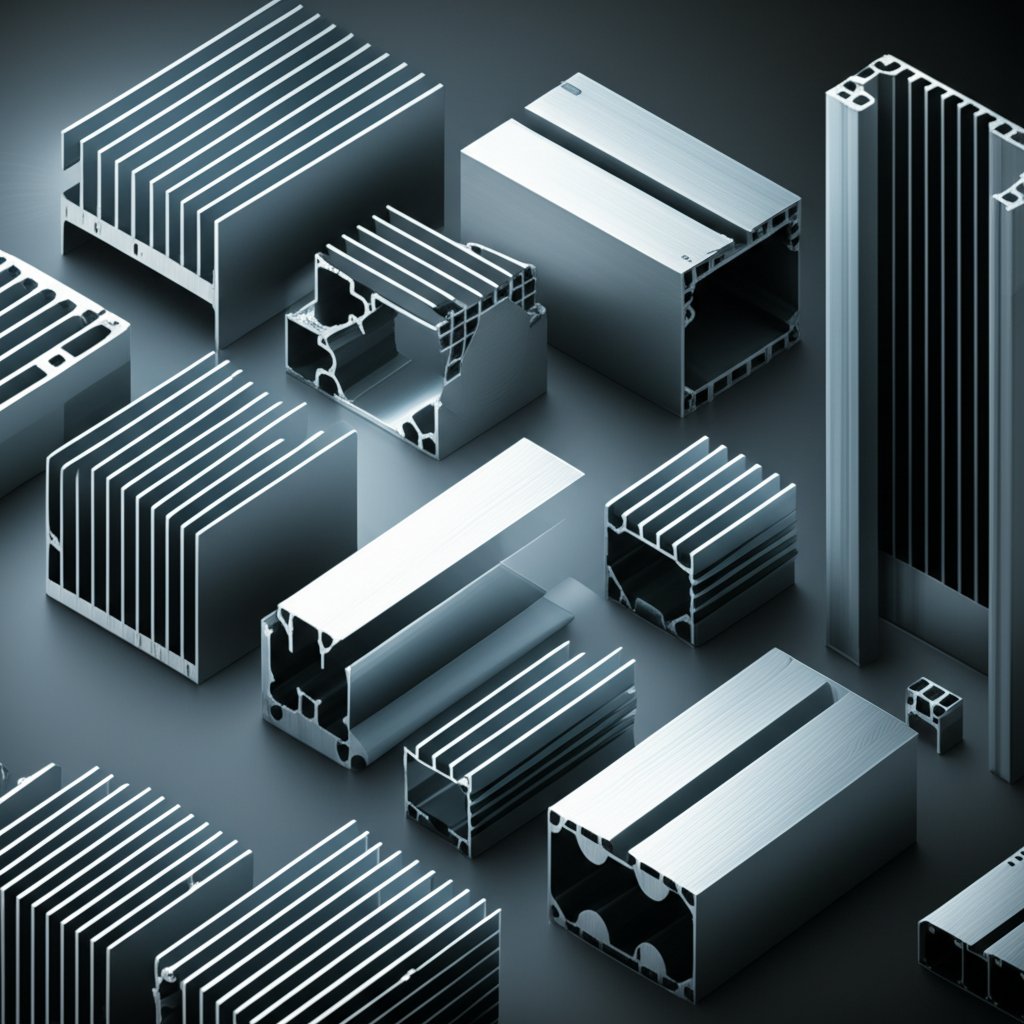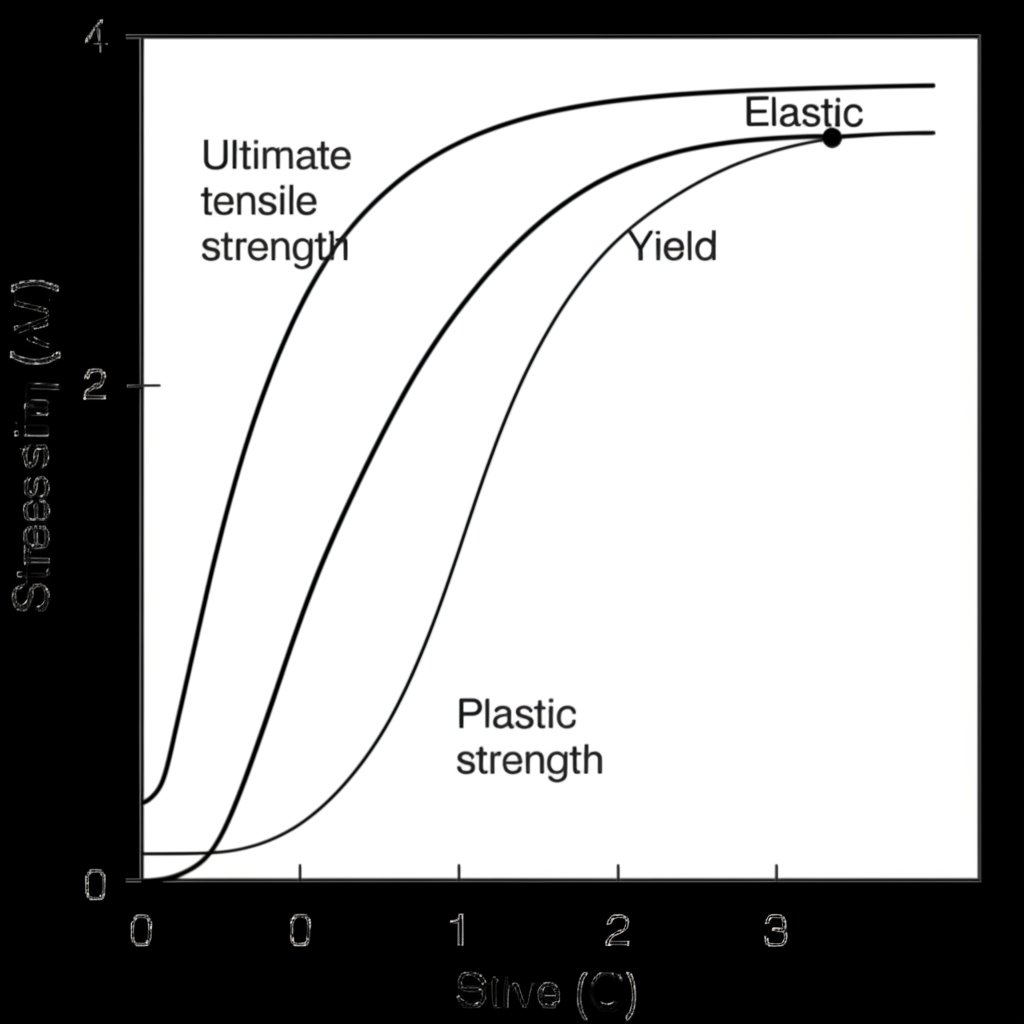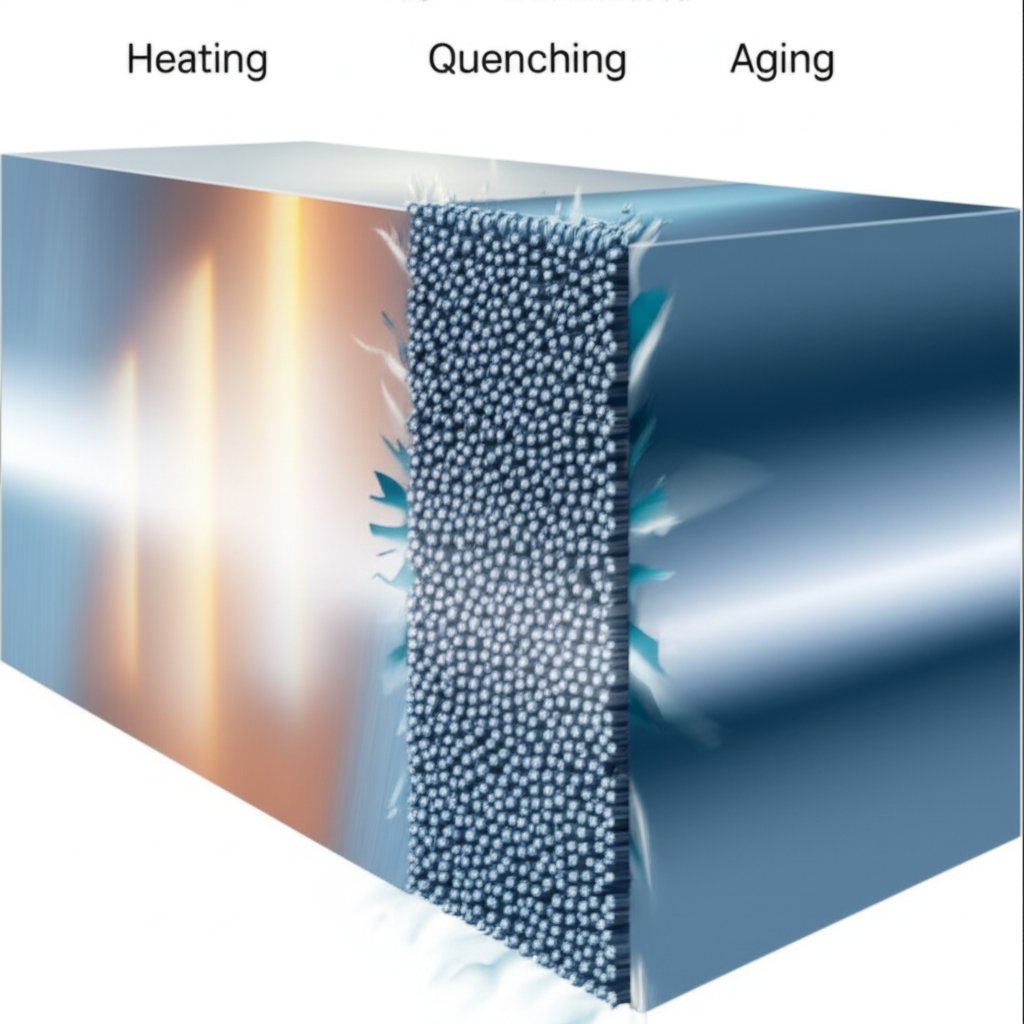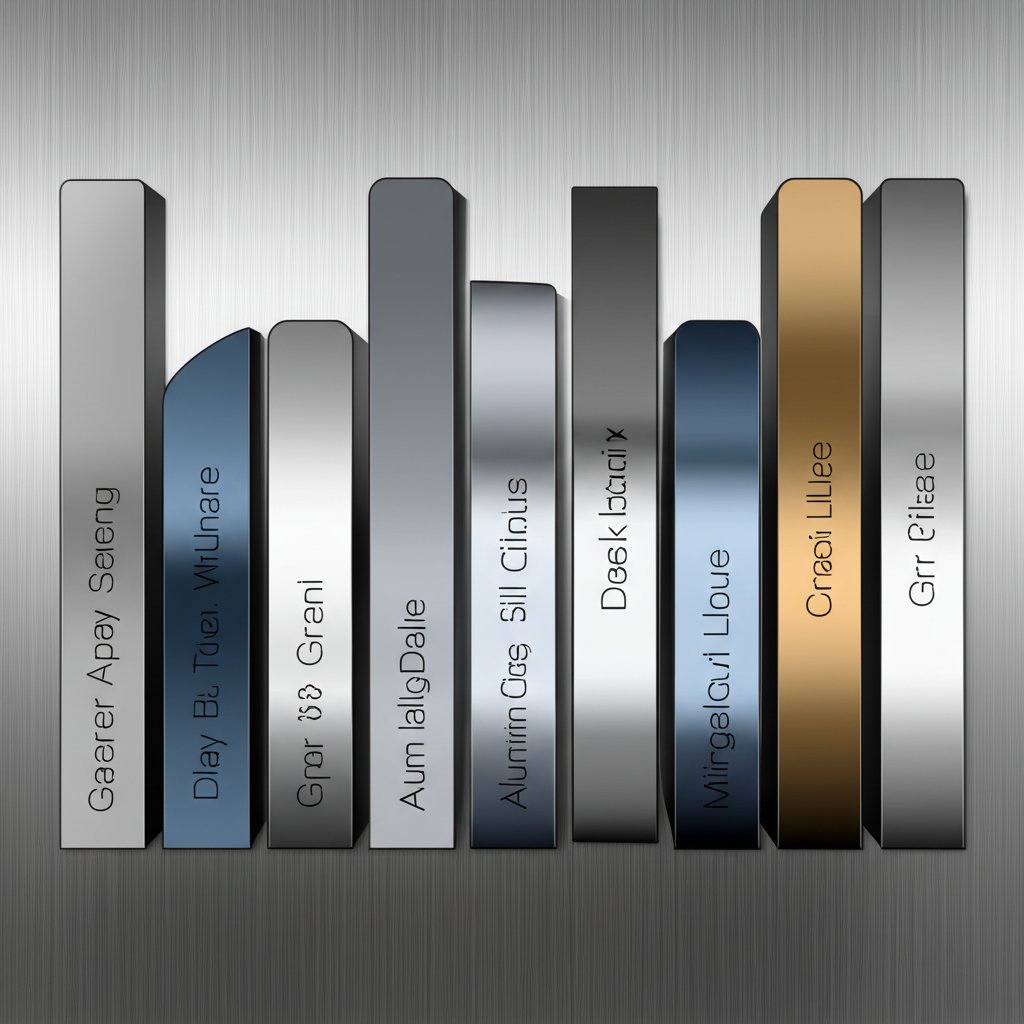
Ever wondered what keeps a skyscraper standing tall or ensures an aircraft wing doesn’t snap mid-flight? The secret often lies in the choice of materials—and, more specifically, in their ability to withstand stress without failing. For engineers and manufacturers, ultimate strength aluminum is a critical concept that underpins safe, efficient, and innovative design.
Let’s break it down: Ultimate tensile strength (UTS) is the maximum amount of tensile (pulling) stress a material can endure before it breaks. In simple terms, it’s the highest force per unit area that a material—like aluminum—can handle while being stretched or pulled, measured in units such as megapascals (MPa) or pounds per square inch (psi). When you see a bridge, a car chassis, or a rail component made from aluminum, you’re looking at materials selected and engineered with UTS in mind.
Why does this matter? Because understanding aluminum tensile strength ensures that the material chosen for a component won’t fail under expected loads. Select a material with too low a UTS, and you risk catastrophic failure; go too high, and you may add unnecessary cost or reduce ductility, making the part brittle.
Engineers rely on UTS as a foundational metric when designing everything from lightweight automotive frames to high-rise building structures. Here’s how UTS shapes material selection:
Imagine designing a rail transit system. The aluminum profiles used must have a UTS high enough to handle the stresses from daily operation, but not so high that the material becomes difficult to work with or unnecessarily expensive (Fractory).
This article is your roadmap to mastering ultimate strength aluminum. We’ll start by defining key mechanical properties, then explore how UTS varies across popular aluminum alloys—like 6061—and how these differences impact real-world applications. Along the way, you’ll learn:
Ready to dive in? Let’s start by building a solid foundation with the science behind ultimate strength in aluminum alloys.

When you’re selecting materials for a critical engineering project, you’ll often hear terms like aluminum ultimate tensile strength, yield strength, and elongation thrown around. Sounds complex? Let’s break these concepts down so you can make informed decisions about which aluminum alloy fits your needs.
Ultimate tensile strength (UTS) is the highest stress that a material—like aluminum—can withstand while being stretched before it breaks. Imagine pulling on a piece of aluminum until it snaps. The maximum force per unit area it can handle right before fracture is its UTS. For engineers, this is a crucial number because it defines the upper limit of what the material can endure in service.
But UTS isn’t the only metric that matters. To fully understand how aluminum behaves under stress, you also need to consider yield strength and elongation. Here’s how these properties stack up:
So, what’s the difference between yield strength vs ultimate strength aluminum? In practical terms, yield strength tells you when the material will start to bend or stretch out of shape permanently, while UTS tells you the absolute breaking point. For most aluminum alloys, there’s a significant gap between these two values, which means aluminum can absorb a lot of energy and deform quite a bit before snapping.
| Property | What It Means | Why It Matters |
|---|---|---|
| Yield Strength | Onset of permanent deformation | Defines the safe working limit |
| Ultimate Tensile Strength (UTS) | Maximum stress before breaking | Indicates total load capacity |
| Elongation | Stretch before fracture (in %) | Shows ductility and toughness |
How do you visualize these properties? Enter the stress-strain curve—a powerful tool that maps out exactly how aluminum responds to increasing force. Picture this graph: the X-axis shows strain (how much the material stretches), and the Y-axis shows stress (the force applied per unit area).
For aluminum alloys, the stress-strain curve highlights their excellent ductility and the safe window for design. Staying within the elastic region ensures components won’t be damaged in service (Vitrek).
By understanding these mechanical properties, you can confidently select the right aluminum alloy for your project—balancing strength, ductility, and safety. Up next, we’ll take a closer look at how these principles apply to one of the most popular alloys: 6061 aluminum, and see how its strength properties stack up in real-world applications.
When you’re choosing an aluminum alloy for a demanding project—maybe a bike frame, a truck chassis, or a custom extrusion—6061 often comes up as the go-to option. But what makes 6061 aluminum stand out in terms of strength, versatility, and weldability? Let’s break it down so you can see why this alloy is a favorite among engineers and manufacturers alike.
First, let’s look at the ingredients. 6061 aluminum is composed of roughly 97.9% aluminum, with magnesium (1.0%) and silicon (0.6%) as its primary alloying elements, plus small amounts of copper (0.28%) and chromium (0.2%) (Xometry). This specific blend gives 6061 its unique balance of mechanical properties—offering strength without sacrificing workability or corrosion resistance.
Because of this composition, 6061 is classified in the 6000 series of aluminum alloys, which are known for their excellent combination of strength and formability.
Why do so many industries rely on 6061? Imagine you’re designing a part that needs to be strong, lightweight, and easy to weld. 6061 aluminum checks all these boxes:
It’s no wonder you’ll find 6061 in everything from aircraft frames and automotive parts to rail transit profiles, furniture, and even beverage cans.
Here’s where things get interesting. The 6061 aluminum ultimate tensile strength isn’t a single number—it varies depending on the temper, or heat treatment, the alloy has undergone. Each temper alters the internal structure of the metal, resulting in different strength and ductility profiles.
| Temper | Ultimate Tensile Strength (MPa) | Ultimate Tensile Strength (psi) | Yield Strength (MPa) | Yield Strength (psi) | Typical Elongation (%) | Common Use Cases |
|---|---|---|---|---|---|---|
| 6061-O (Annealed) | 124–150 | 18,000–22,000 | 55–83 | 8,000–12,000 | 18–25 | Forming, deep drawing, where maximum ductility is needed |
| 6061-T4 (Solution heat-treated & naturally aged) | 180–241 | 26,000–35,000 | 110–145 | 16,000–21,000 | 10–22 | Welded assemblies, moderate strength parts |
| 6061-T6 (Solution heat-treated & artificially aged) | 290–310 | 42,000–45,000 | 240–276 | 35,000–40,000 | 8–12 | High-strength extrusions, structural frames, aerospace, automotive |
Let’s put this into context. If you need a part that’s easy to form or bend—like a custom bracket—you might choose 6061-O for its high ductility. For welded assemblies, 6061-T4 is popular because it offers a balance between strength and weldability. But for most structural applications, where maximum strength is essential, 6061-T6 is the top pick. Its combination of high yield and ultimate tensile strength makes it suitable for load-bearing components in vehicles, machinery, and even aerospace structures.
One thing to remember: welding 6061-T6 can reduce the strength in the heat-affected zone to near T4 levels, but post-weld heat treatment can recover much of the lost strength.
Next, we’ll explore how the T6 temper process specifically boosts the strength of 6061 aluminum, and why process control is so critical to achieving top performance.

Ever wonder why aluminum 6061 T6 ultimate tensile strength is so much higher than its annealed or naturally aged counterparts? The answer lies in what happens deep inside the metal—where science and manufacturing precision meet. Let’s walk through the T6 temper process and see why it’s a game-changer for engineers who need reliable, high-strength aluminum.
At first glance, temper designations like T6 might seem cryptic. But here’s the secret: T6 is all about controlled heat treatment. For 6061 aluminum, the T6 temper means the alloy has gone through two critical steps:
Sounds complex? Think of it like baking bread: the right temperature and timing make all the difference between a soft loaf and a perfectly crusty one. In aluminum, these steps transform a soft, ductile metal into a tough, high-strength material ideal for demanding applications.
So what’s really happening at the microscopic level? High-resolution electron microscopy studies reveal that, in the T6 state, 6061 aluminum is packed with ultra-fine, needle-shaped precipitates—each only a few nanometers in diameter. These precipitates are distributed along the aluminum’s crystal lattice and are partially coherent with the matrix, which means they’re especially effective at blocking the movement of dislocations (the microscopic carriers of plastic deformation) (Maisonnette et al.).
Here’s the key: the T6 temper doesn’t just make 6061 stronger—it does so without sacrificing too much ductility or weldability, making it a favorite for structural, automotive, and aerospace parts.
But achieving top-tier t6 temper aluminum strength isn’t just about following a recipe. Every step—heating, quenching, and aging—must be tightly controlled. Even small deviations in temperature, timing, or cooling rate can mean the difference between a high-performing product and one that falls short in critical applications.
Manufacturers must also perform rigorous chemical, mechanical, and non-destructive testing to verify that every T6 aluminum product meets strict industry standards. This includes hardness and tensile tests, ultrasonic inspections, and real-time process monitoring.
Not all suppliers can consistently deliver high-strength T6 aluminum. That’s where manufacturing expertise and investment in technology make a difference. For example, Shengxin Aluminum leverages advanced extrusion lines, precise heat treatment systems, and comprehensive quality management to produce T6-tempered profiles that meet the demanding requirements of industries like rail transit, automotive, and construction (Shengxin Aluminum).
When your project demands the highest levels of reliability and mechanical performance, partnering with a manufacturer that understands—and controls—every detail of the T6 process is essential.
Next, we’ll put 6061-T6 into context by comparing its ultimate strength to other popular aluminum alloys, helping you make the best choice for your next engineering challenge.
When you’re tasked with selecting the right material for a high-performance application, the array of aluminum alloys can seem overwhelming. How does the ultimate strength of 6061 stack up against other popular grades like 3003, 2024, and the high-strength 7075? And how do these compare to steel? Let’s break down the data so you can make informed decisions for your next project.
Imagine you’re designing a lightweight structural frame, a pressure vessel, or a rail transit component. The stakes are high: choose an alloy that’s too weak, and you risk failure; pick one that’s unnecessarily strong, and you might drive up costs or compromise workability. That’s where an aluminum alloy strength comparison becomes invaluable.
Each aluminum alloy has a unique blend of alloying elements—like magnesium, silicon, copper, or zinc—that directly influence its mechanical properties. These ingredients, combined with specific heat treatments (tempers), create a spectrum of ultimate tensile strengths (UTS) and other characteristics. The table below summarizes the key differences among some of the most widely used grades:
| Alloy | Main Alloying Elements | Common Tempers | Ultimate Tensile Strength (MPa) | Yield Strength (MPa) | Elongation (%) | Key Characteristics | Typical Applications |
|---|---|---|---|---|---|---|---|
| 1100 (O, H14) | 99%+ Al | O (annealed), H14 (strain-hardened) | 90–124 | 34–117 | 15–40 | Excellent ductility, highest corrosion resistance, low strength | Chemical equipment, food industry, decorative |
| 3003 (O, H14) | Mn (1.2%), small Cu | O (annealed), H14 (strain-hardened) | 110–130 | 40–110 | 10–30 | Good formability, moderate strength, excellent corrosion resistance | Sheet metal work, roofing, heat exchangers |
| 2024 (O, T3, T351) | Cu (4.4%), Mg (1.5%), Mn (0.6%) | O (annealed), T3/T351 (heat-treated) | 185–485 | 75–345 | 18–20 | High strength, good fatigue resistance, lower corrosion resistance | Aerospace, structural components |
| 6061 (O, T4, T6) | Mg (1.0%), Si (0.6%) | O (annealed), T4, T6 | 124–310 | 55–276 | 8–30 | Versatile, good strength, excellent weldability, corrosion resistance | Structural, automotive, rail transit, general engineering |
| 7075 (O, T6) | Zn (5.6%), Mg (2.5%), Cu (1.6%) | O (annealed), T6 | 228–572 | 103–505 | 11–17 | Highest strength, lower formability, fair corrosion resistance | Aerospace, defense, high-stress parts |
Engineers often ask: "Is aluminum as strong as steel?" The answer depends on the grade and application. While the ultimate strength aluminum vs steel comparison shows that most steels have higher UTS values (mild steel often exceeds 400 MPa, and high-strength steels can reach 1,000 MPa or more), aluminum alloys offer a much better strength-to-weight ratio. For example, 7075-T6 aluminum boasts a UTS of 572 MPa—rivaling some structural steels—while weighing only about one-third as much. This makes high-strength aluminum alloys a top choice for weight-sensitive applications like aerospace and transportation.
However, aluminum’s lower density means you can achieve similar or even better performance per unit weight compared to steel in many designs. Plus, aluminum’s corrosion resistance and ease of fabrication make it a compelling alternative in many engineering scenarios.
When making your selection, always consider not just the ultimate strength, but also factors like weldability, formability, corrosion resistance, and cost. The right alloy depends on the specific demands of your project—whether it’s a lightweight rail profile, a pressure vessel, or a critical aerospace bracket.
Up next, we’ll look beyond tensile strength to explore compressive and shear properties—giving you a complete picture of aluminum’s mechanical performance in real-world applications.
When you’re designing a component that needs to do more than just resist pulling forces, you’ll want to understand not only tensile strength but also aluminum compressive strength and aluminum shear strength. These properties are critical in real-world scenarios—think of a rail transit beam under heavy load, or a machined bracket holding two plates together. But what do these terms really mean, and how do they relate to ultimate tensile strength?
Ever wondered why some parts snap, while others buckle or shear off? It all comes down to the type of force the material faces. Here’s a quick breakdown to help you visualize the differences:
Each type of force demands a different kind of strength from the material. If you overlook these distinctions, your design could fail—sometimes in unexpected ways.
In many structural applications, aluminum parts are loaded in compression. So, how does aluminum hold up? The compressive strength of aluminum alloys typically ranges from 30 MPa up to 280 MPa, depending on the specific alloy and temper. For reference, these values are often similar to the material’s yield strength in tension, since aluminum is nearly as strong under compression as it is in tension—at least until buckling or instability occurs in slender shapes.
Practical example: The legs of a heavy-duty table or the upright supports in a rail car frame must resist compressive loads without crushing or buckling.
Shear forces are everywhere—fasteners, joints, and even cutting operations all depend on a material’s ability to withstand sliding failures. But here’s a challenge: direct aluminum shear strength values aren’t always listed in datasheets. So, how do engineers estimate it?
Recent studies show you can reliably estimate the ultimate shear strength (USS) of aluminum alloys as about 60% of their ultimate tensile strength (UTS). For example, if an alloy’s UTS is 300 MPa, its USS is typically around 180 MPa (Online Journal of Mechanical Engineering).
Why does this matter? In pressworking operations like blanking or piercing, knowing the USS lets you size your equipment correctly and avoid unexpected failures.
| Property | Typical Value (Range) | Relation to UTS | Key Applications |
|---|---|---|---|
| Ultimate Tensile Strength (UTS) | 75–360 MPa | 100% | Structural frames, extrusions, load-bearing parts |
| Compressive Strength | 30–280 MPa | ≈Yield Strength | Columns, supports, rail beams |
| Ultimate Shear Strength (USS) | 45–216 MPa | ≈60% of UTS | Fasteners, joints, pressworking, machining |
By understanding all three, you can confidently select the right aluminum alloy and design geometry for your application—ensuring your part performs reliably, whether it’s stretching, squeezing, or sliding under load. Ready to see what factors most influence these strengths? Let’s explore the key variables that shape an alloy’s final performance in the next section.
Ever wondered why two pieces of aluminum can look identical but perform so differently under stress? When you’re engineering for safety, durability, or maximum load, it pays to know the factors affecting aluminum strength. Let’s break down the key variables that determine the final mechanical properties of any aluminum product—so you can make smarter choices for your next project.
Imagine you’re specifying material for a high-speed rail profile, an automotive bracket, or a construction beam. The label says "aluminum," but the actual strength depends on much more than just the base metal. Here are the main factors that shape ultimate strength:
When you combine the right alloying elements, heat treatment, processing, and grain control, you unlock the full potential of ultimate strength aluminum. For example, a 6061-T6 profile owes its performance to the synergy of magnesium/silicon chemistry, precise heat treatment, controlled extrusion, and fine grain refinement. Miss a step, and you risk lower strength, reduced fatigue life, or unexpected failure.
As you move to the next section, you’ll see how these factors are reflected in the strength charts for different aluminum series—making it easier to select the right alloy for your engineering challenge.

When you picture a modern aircraft wing, a lightweight car frame, or the sleek profile of a high-speed train, you’re seeing high strength aluminum applications in action. But what makes these alloys so indispensable across industries—and how do manufacturers like Shengxin Aluminum help engineers turn material science into real-world solutions?
Imagine you’re tasked with designing a structure that must be light, strong, corrosion-resistant, and cost-effective. High-strength aluminum alloys check all these boxes, offering a unique combination of properties:
Let’s break down how these strengths translate into industry-specific solutions.
In aerospace, every kilogram saved can mean significant fuel savings and increased payload capacity. High-strength aluminum alloys—especially from the 2000 and 7000 series—are the backbone of airframes, fuselage skins, wing spars, and landing gear (Industrial Metal Supply). For example:
Aluminum’s lightweight nature allows for larger aircraft and longer ranges, while its durability ensures safety through years of service.
Ever wondered how electric vehicles achieve both range and crash safety? The secret is often in their aluminum chassis and body panels. High-strength aluminum alloys are used for:
By reducing vehicle weight without sacrificing structural integrity, manufacturers can improve fuel efficiency, accelerate electrification, and meet stricter emissions standards (ScienceDirect).
Look up at a modern skyscraper or bridge—chances are, you’ll find aluminum at work. Its high strength-to-weight ratio allows for:
Aluminum’s natural corrosion resistance means less maintenance and longer life, even in coastal or industrial environments. Plus, its recyclability supports sustainable building practices.
When it comes to aluminum profiles for rail transit, the demands are intense: safety, speed, passenger comfort, and energy efficiency all hinge on material performance. High-strength aluminum is now the material of choice for:
For example, extruded aluminum profiles are widely used in modern trains because they combine lightness with the rigidity needed to withstand dynamic loads and impacts. This not only improves acceleration and braking efficiency but also allows for larger, more comfortable passenger spaces.
Turning these technical advantages into real-world results requires manufacturing expertise and robust quality control. That’s where companies like Shengxin Aluminum stand out. With advanced extrusion lines, state-of-the-art heat treatment, and deep experience in custom profile design, Shengxin supplies high-strength, complex aluminum profiles for:
By collaborating closely with engineers and OEMs, Shengxin ensures that every profile meets the exacting standards of industries where failure simply isn’t an option.
From aerospace to rail transit, high-strength aluminum alloys are enabling new levels of performance, safety, and sustainability. In the next section, you’ll find a quick reference guide to help you match alloy series to your specific strength requirements—making your next material selection faster and smarter.

Ever found yourself needing to quickly compare the strength of different aluminum alloys for your next project? Whether you’re designing a lightweight frame, selecting material for a rail transit profile, or just want an at-a-glance summary for your engineering team, this aluminum alloy strength chart is your go-to resource. Let’s break down the essential strength characteristics of the most widely used aluminum series, so you can make fast, informed decisions.
Imagine you’re at the drawing board: Which alloy should you pick for maximum strength, best formability, or superior corrosion resistance? Here’s a concise chart summarizing ultimate tensile strength (UTS), yield strength, and typical applications for each major series, based on industry-standard reference data (Engineers Edge):
| Series / Alloy | Main Alloying Elements | Common Tempers | Ultimate Tensile Strength (ksi / MPa) | Yield Strength (ksi / MPa) | Typical Applications |
|---|---|---|---|---|---|
| 1100 | 99%+ Al | O, H14, H18 | 13–24 / 90–165 | 5–22 / 34–152 | General fabrication, chemical, food industry |
| 3003 | Mn | O, H14, H18 | 16–29 / 110–200 | 6–27 / 41–186 | Sheet metal, heat exchangers, roofing |
| 5052 | Mg | O, H32, H38 | 28–42 / 190–290 | 13–37 / 90–255 | Marine, tanks, pressure vessels |
| 6061 | Mg, Si | O, T6, T651 | 18–45 / 124–310 | 8–40 / 55–276 | Structural, automotive, rail transit |
| 6063 | Mg, Si | O, T5, T83 | 13–37 / 90–255 | 7–35 / 48–241 | Architectural, extrusions |
| 2024 | Cu, Mg, Mn | O, T3, T4 | 27–70 / 185–485 | 11–50 / 76–345 | Aerospace, high-stress parts |
| 7075 | Zn, Mg, Cu | O, T6, T651 | 33–83 / 228–572 | 15–73 / 103–505 | Aerospace, defense, critical structures |
By referencing this aluminum alloy strength chart, you’ll streamline your material selection process and ensure your designs meet both performance and safety requirements. Next, we’ll wrap up with a summary of what you’ve learned and offer guidance for sourcing custom aluminum profiles tailored to your toughest engineering challenges.
When you think about the structures and products that define modern life—sleek trains, efficient vehicles, soaring buildings—it’s clear that ultimate strength aluminum is at the heart of engineering innovation. But as you’ve seen throughout this guide, achieving the right balance of strength, weight, and durability isn’t just about picking “aluminum”—it’s about making informed choices at every step.
The future of aluminum is being shaped by rapid advances in materials science and manufacturing technology. Imagine alloys that rival steel in strength but are far lighter, or next-generation production methods that cut energy use and carbon emissions dramatically. From the integration of recycled content to the adoption of additive manufacturing and digital quality control, the aluminum industry is moving swiftly toward more sustainable and efficient practices.
For engineers and designers, this means even more options to create lighter, stronger, and greener products—whether you’re working on the latest EV platform, a high-speed rail system, or a landmark building.
So, how do you turn technical knowledge into real-world results? The answer lies in choosing a manufacturing partner with the expertise, technology, and flexibility to deliver high-performance, custom aluminum profiles—no matter how complex your requirements.
Manufacturers like Shengxin Aluminum stand out by combining large-scale production capacity with deep technical know-how and a proven track record across industries. Whether you need high-strength extrusions for rail transit, automotive, or architectural projects, partnering with a trusted aluminum profile manufacturer helps you turn bold designs into reality—on time and on spec.
As you move forward with your next project, remember: the right alloy, temper, and manufacturing partner can make all the difference. Stay curious about new aluminum innovations, prioritize quality and customization, and don’t hesitate to reach out to experienced manufacturers for guidance. With the right approach, you’ll unlock all the advantages ultimate strength aluminum has to offer—delivering safer, lighter, and more sustainable solutions for tomorrow’s world.
The yield strength of aluminum varies widely by alloy and temper. For example, pure aluminum offers around 30 MPa, while high-strength alloys like 6061-T6 or 7075-T6 can reach over 240 MPa and 500 MPa respectively. Yield strength marks the point where aluminum starts to deform permanently, making it a key factor in safe material selection for engineering projects.
Ultimate shear strength in aluminum alloys is typically about 60% of their ultimate tensile strength. For instance, 6061-T6 aluminum has a shear strength around 180–186 MPa, making it suitable for fasteners, joints, and pressworking applications. This property is crucial for components exposed to sliding or cutting forces.
6061-T6 aluminum offers an ultimate tensile strength of approximately 290–310 MPa (42,000–45,000 psi), with a yield strength of 240–276 MPa. This high strength, combined with good weldability and corrosion resistance, makes it a preferred choice for structural, automotive, and rail transit applications.
While most steels have higher absolute ultimate tensile strengths, high-strength aluminum alloys like 7075-T6 can rival structural steels, reaching up to 572 MPa. Aluminum’s main advantage is its low density, providing an excellent strength-to-weight ratio ideal for aerospace and transportation industries.
Ultimate strength in aluminum is shaped by alloying elements (such as magnesium, silicon, copper, or zinc), heat treatment processes, manufacturing methods, grain structure, and work hardening. Precision in each step—especially heat treatment and quality control—ensures optimal strength and reliability for demanding applications.
 Интернет Сервис
Интернет Сервис 0086 136 3563 2360
0086 136 3563 2360 sales@sxalu.com
sales@sxalu.com +86 136 3563 2360
+86 136 3563 2360